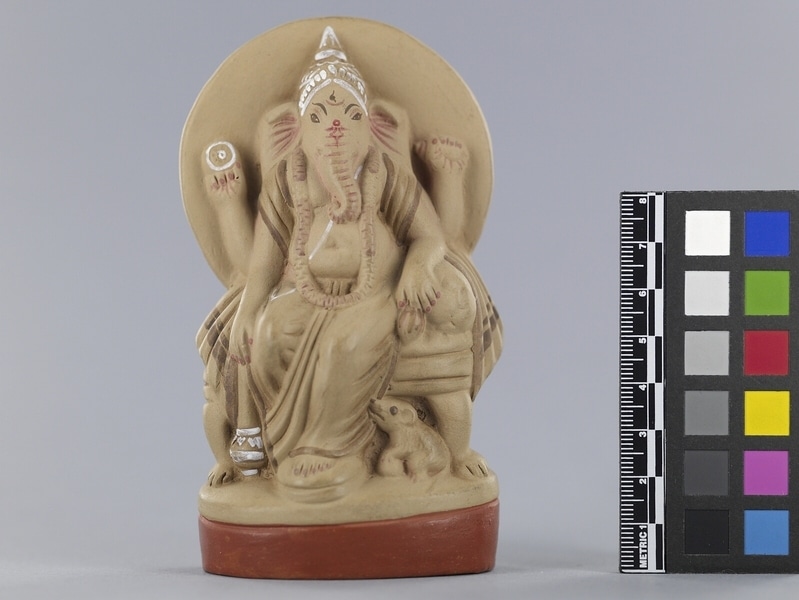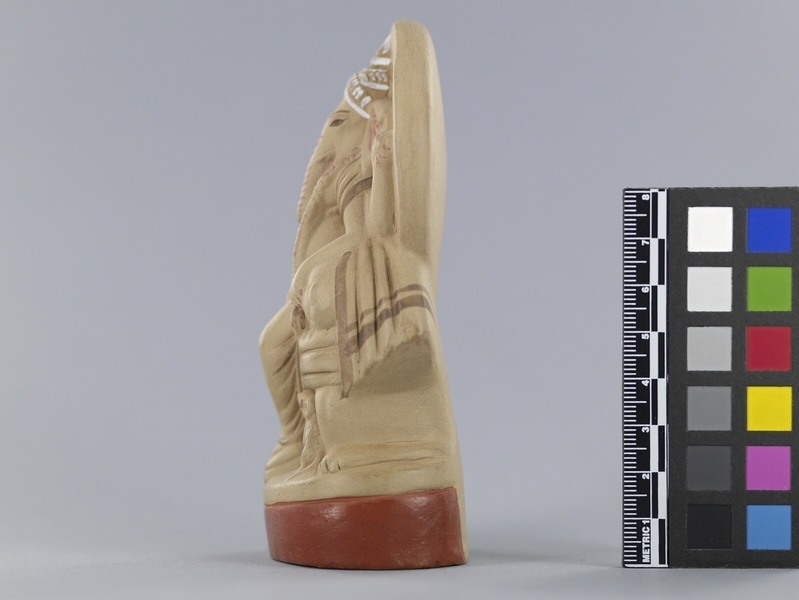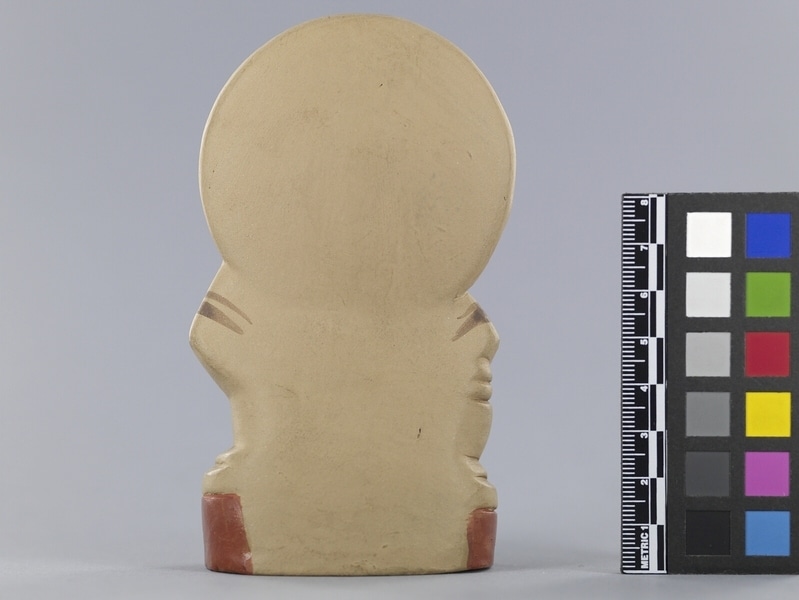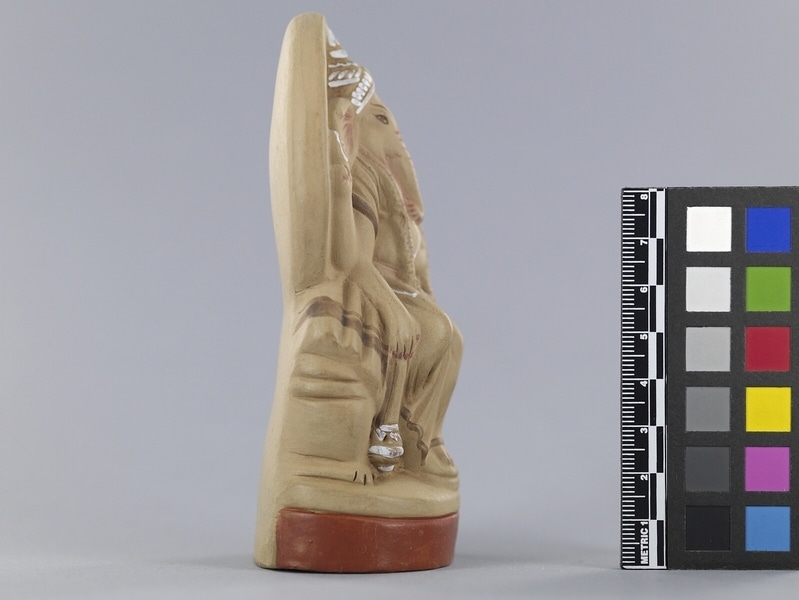Figure Item Number: Ef242 from the MOA: University of British Columbia




Description
A seated anthro-zoomorphic figure that has a head of an elephant and a body of a man with four arms, representing the deity Ganesh. There are incised and intricate painted details on the headdress, the face, and the robe. Each hand holds small object. A rat is at the foot of the figure, next to the throne-like chair. The base is an oval shaped pedestal of red-brown clay. The rest of the figure is a natural tan finish with painted lines of white, red, and brown.
History Of Use
Bengali potters of the (Kumara) Kumbhakara caste are heirs to a long tradition in village and urban areas. Production of clay pots and vessels for everyday use is their regular occupation. However, images for votive offerings are also important and are variously represented as fertility figures, protective symbols (horses, elephants), or gods. The animal and human figures sold as toys have a close affinity in shape and character to the votive images. In fact, the same image often fulfills both purposes.
Iconographic Meaning
Ganesh is second son of Shiva, bringer of good fortune, remover of obstacles, initiator of new projects. Has head of elephant and body of man. Is shown with his vehicle (vahana), the rat. Wears doti (body cloth) and displays upovita (sacred thread) indicating highborn status. Each of four hands holds: conch (sangu), lotus (pada), club (gada), and discus (chakra).
Cultural Context
household shrine image; devotional ornament
Item History
- Made in Nadia, West Bengal, India before 1976
- Collected during 1976
- Owned by Stephen Inglis before December 2, 1977
- Received from Museum of Anthropology Donations Fund (Funding source) and Stephen Inglis (Seller) on December 2, 1977
What
Who
- Culture
- Bengali
- Previous Owner
- Stephen Inglis
- Received from
- Museum of Anthropology Donations Fund (Funding source) and Stephen Inglis (Seller)
Where
- Holding Institution
- MOA: University of British Columbia
- Made in
- Nadia, West Bengal, India
When
- Creation Date
- before 1976
- Collection Date
- during 1976
- Ownership Date
- before December 2, 1977
- Acquisition Date
- on December 2, 1977
Other
- Item Classes
- ceramics
- Condition
- excellent
- Accession Number
- 0411/0038